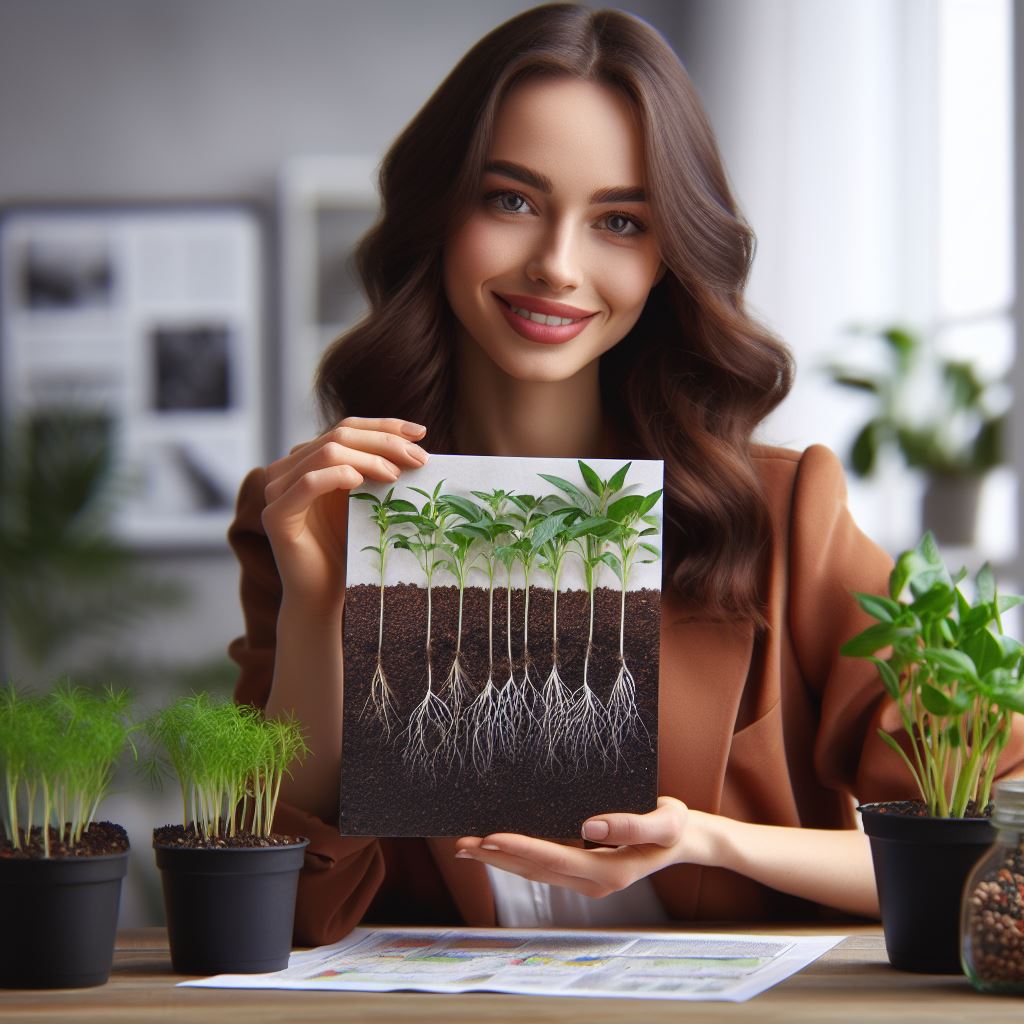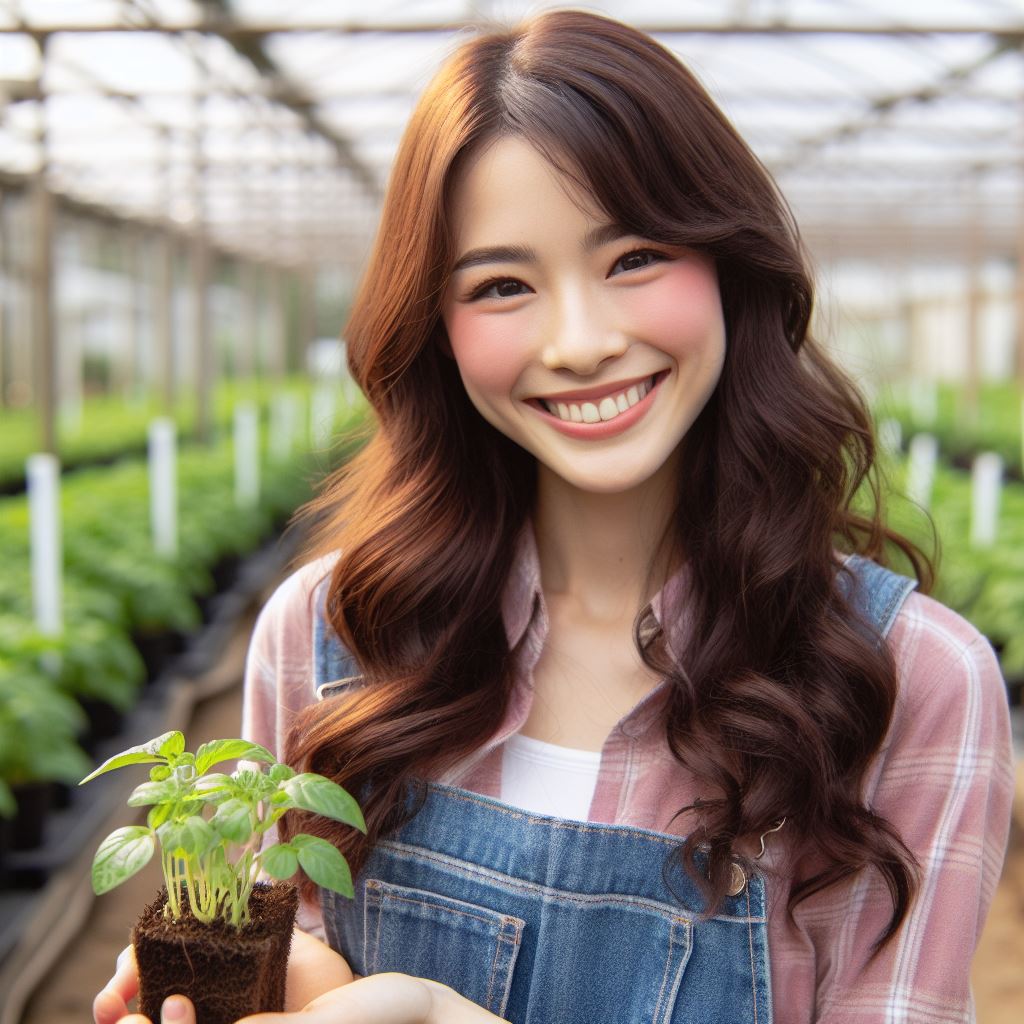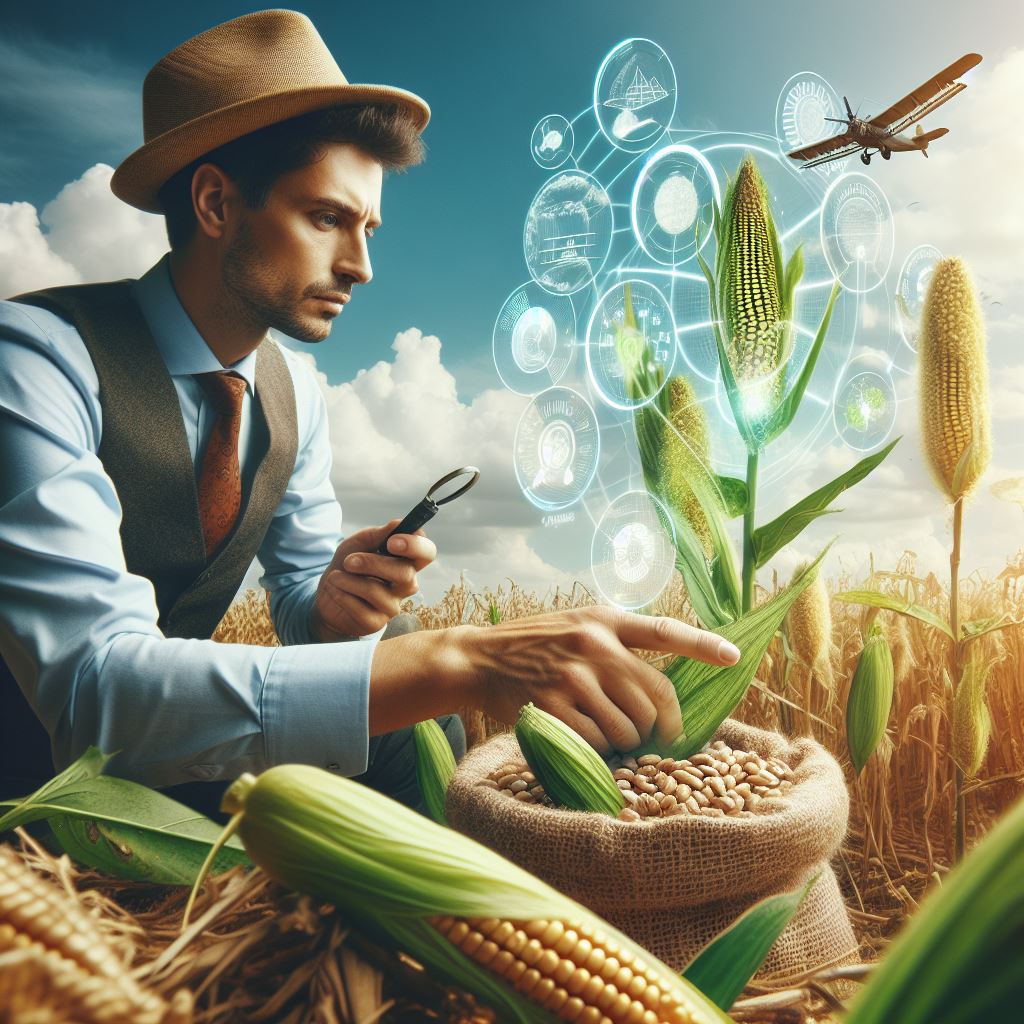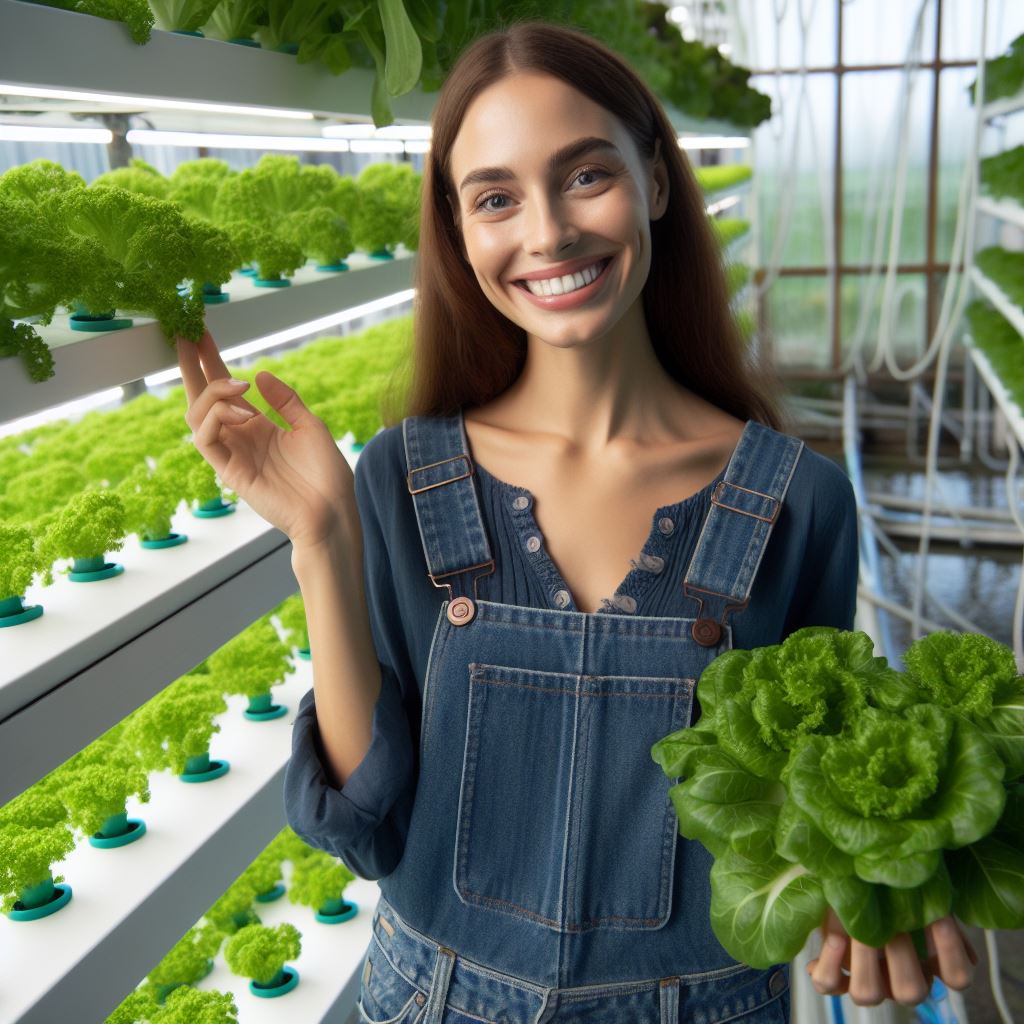Introduction
Starting seeds indoors is a valuable technique for every gardener, offering numerous benefits and promising successful results.
In this blog section, we will provide you with a step-by-step guide to seed starting indoors.
By following these instructions, you will be able to enjoy the thrill of watching your plants grow from the very beginning, ensuring a bountiful harvest in your garden.
Benefits of Starting Seeds Indoors
There are several advantages to starting seeds indoors.
Firstly, it allows you to get a head start on the growing season, as you can begin the process before the last frost date.
This means you can enjoy fresh produce earlier in the year and extend your gardening season.
Secondly, starting seeds indoors gives you greater control over the growing conditions.
You can create the perfect environment for your seeds, providing optimal light, moisture, and temperature levels.
This control results in stronger and healthier seedlings, which will ultimately translate into higher yields.
Step-by-Step Guide
In this blog post, we will provide a detailed, step-by-step guide to help you successfully start your seeds indoors.
We will cover everything from selecting the right seeds and containers to preparing the soil mix, sowing the seeds, and caring for the seedlings.
By following this guide, you will be equipped with the knowledge and confidence to embark on your seed starting journey.
Starting seeds indoors is a rewarding endeavor that offers numerous benefits and ensures a successful gardening experience.
Follow our step-by-step guide to achieve healthy seedlings and a flourishing garden that will bring you joy and satisfaction throughout the growing season.
Step 1: Choose the Right Seeds
When it comes to seed starting indoors, selecting the right seeds is crucial for successful germination and growth.
Transform Your Agribusiness
Unlock your farm's potential with expert advice tailored to your needs. Get actionable steps that drive real results.
Get StartedHere, we will discuss the importance of choosing suitable seeds for indoor starting and provide tips for making the right selection.
Additionally, we will highlight some popular seed varieties that are ideal for indoor starting.
Importance of Selecting Seeds Suitable for Indoor Starting
Selecting seeds that are suitable for indoor starting is essential because not all seeds thrive in an indoor environment.
Some seeds require specific temperature, light, and humidity conditions that cannot be easily replicated indoors.
By choosing seeds that are well-suited for indoor starting, you can increase your chances of success and enjoy a bountiful harvest.
Here are some reasons why choosing the right seeds is important:
- Optimal Growth: Seeds that are specifically labeled for indoor starting are bred to perform well in controlled environments, ensuring optimal growth.
- Efficient Use of Space: Indoor starting allows you to maximize your space and grow a wider variety of plants, making it important to choose seeds that can thrive indoors.
- Early Start: Certain seeds, such as tomatoes and peppers, benefit from an early start indoors to extend the growing season. Choosing the right seeds for indoor starting allows you to gain a head start.
Tips for Choosing the Right Seeds
Here are some useful tips to help you select the right seeds for indoor starting:
- Read Seed Packets: Carefully read the information provided on seed packets to determine whether they are suitable for indoor starting.
- Look for Indoor Varieties: Look for seed varieties that are specifically labeled as “indoor” or “suitable for container gardening.”
- Consider Space and Lighting: Take into account the available space and lighting conditions in your home when choosing seeds. Some plants require more space or sunlight than others.
- Consider Germination Time: If you have a limited time frame, choose seeds that have a shorter germination period to ensure timely growth.
- Research Seed Suppliers: Purchase seeds from reputable suppliers who specialize in indoor gardening to ensure quality and reliability.
Popular Seed Varieties for Indoor Starting
Here are some popular seed varieties that are well-suited for indoor starting:
- Tomatoes: Compact tomato varieties like ‘Celebrity,’ ‘Sweet 100,’ and ‘Roma’ are excellent choices for indoor starting.
- Peppers: Types such as ‘Jalapeno,’ ‘Bell Pepper,’ and ‘Cayenne’ are known to thrive indoors and produce abundant yields.
- Herbs: Basil, thyme, chives, and parsley are popular herb seeds that can be easily started indoors.
- Lettuce: Leafy greens like spinach, arugula, and kale are quick-growing and perfect for indoor starting.
- Flowers: Marigolds, petunias, and pansies are beautiful flower varieties that can be successfully started indoors.
Remember, the key to successful seed starting indoors is to choose seeds that are well-suited for the conditions you can provide.
By following these tips and selecting the right seeds, you will be well on your way to a thriving indoor garden.
Read: Watering Wisdom: How Much is Too Much?
Step 2: Gather the Necessary Supplies
Essential tools and materials needed for starting seeds indoors
To successfully start seeds indoors, you will need the following essential tools and materials:
- Seed trays or containers: These provide a controlled environment for seed germination.
- Seed starting mix: A light and sterile medium that promotes healthy root development.
- Seeds: Choose high-quality seeds from reputable sources for optimal germination rates.
- Labels: Use these to mark different varieties and keep track of your seedlings.
- Watering can or spray bottle: Essential for gentle watering without disturbing the delicate seeds.
- Plastic wrap or clear dome: Helps create a mini greenhouse effect to retain moisture.
- Grow lights: Provide supplemental lighting for seedlings in areas with insufficient natural sunlight.
- Heat mat: Some seeds require warmer temperatures for successful germination.
- Thermometer: Monitors the temperature to ensure optimum conditions for seed germination.
- Fertilizer: Choose a balanced liquid fertilizer specifically formulated for seedlings.
- Transplanting tools: Small scoops or transplanting spoons for moving seedlings to larger containers.
Purpose of each supply and its significance in the process
Each supply serves a specific purpose in the seed starting process:
- Seed trays or containers provide a suitable space for seed germination, keeping them organized and preventing cross-contamination.
- Seed starting mix is a sterile medium that retains moisture while allowing proper root aeration, preventing diseases and providing nutrients.
- High-quality seeds ensure better germination rates, healthier seedlings, and higher chances of successful transplantation.
- Labels help identify different plant varieties and keep track of their progress and specific care requirements.
- A watering can or spray bottle allows gentle and precise watering, avoiding oversaturation or disturbance of the delicate seedlings.
- Plastic wrap or a clear dome creates a humid environment, promoting seed germination by retaining moisture and maintaining warmth.
- Grow lights are essential for seedlings in areas with insufficient sunlight, providing the necessary light energy for healthy growth.
- A heat mat aids the germination of seeds that require warmer temperatures, ensuring optimal conditions for successful sprouting.
- A thermometer helps monitor the temperature in the seed-starting area, preventing extreme fluctuations that may hinder germination.
- A balanced liquid fertilizer supplies essential nutrients during the early growth stages, promoting vigorous and healthy seedling development.
- Transplanting tools facilitate the careful handling and moving of seedlings to larger containers, minimizing damage to delicate roots.
Recommendations for quality products and alternative options
When choosing supplies, consider the following recommendations for quality products:
- Opt for sturdy seed trays or containers made of durable plastic or biodegradable materials.
- Choose a seed starting mix that is well-draining, lightweight, and free from harmful pathogens.
- Source seeds from reputable suppliers known for their high germination rates and wide seed variety selection.
- Use waterproof labels or marker pens that won’t fade or smudge when exposed to moisture.
- Invest in a watering can with a fine rose or a spray bottle with an adjustable nozzle for a gentle mist.
- Select a transparent plastic wrap or dome that fits snugly over the seed trays or containers.
- For grow lights, consider energy-efficient LED options that provide the necessary light spectrum for plant growth.
- Choose a heat mat with adjustable temperature settings and built-in safety features for optimal control.
- Use a reliable thermometer with accurate readings to monitor the temperature consistently.
- Look for a balanced liquid fertilizer specifically formulated for seedlings with a recommended NPK ratio.
- Transplanting tools should have a comfortable grip and thin edges for delicate root handling.
Remember that while these recommendations highlight quality options, there are often alternative products available that may suit your budget or specific needs.
Now that you have gathered your supplies, you are ready to move on to the next step: preparing the seed trays and sowing the seeds.
Read: Organic Pest Control: Tools & Techniques
Step 3: Prepare the Containers
Proper container preparation is crucial for successful seed starting indoors.
By choosing the right containers and ensuring cleanliness, you can create an ideal environment for your seeds to germinate and grow into healthy seedlings.
Different container options for seed starting
Having a variety of container options is beneficial, as different plants have specific needs.
Plastic trays or cell packs are popular choices due to their affordability and versatility.
They come in various sizes, allowing you to accommodate a range of seedlings at once.
These containers also have individual cells, which prevent root systems from becoming entangled.
Biodegradable options like peat pots are another great choice.
Showcase Your Farming Business
Publish your professional farming services profile on our blog for a one-time fee of $200 and reach a dedicated audience of farmers and agribusiness owners.
Publish Your ProfileThey are made from renewable resources and can be planted directly into the ground without disturbing the roots.
These pots provide adequate aeration and drainage, promoting healthier root development.
However, they can be slightly more expensive than plastic trays.
If you prefer a cost-effective and environmentally friendly option, consider making newspaper pots.
Simply roll strips of newspaper into desired sizes and secure them with tape.
These pots will break down naturally over time and can be directly planted into the ground, eliminating the need for transplanting.
How to clean and sterilize the containers to prevent diseases
Before using any container, it’s important to clean and sterilize them properly.
Wash them with warm soapy water to remove any dirt or debris.
Rinse them thoroughly to remove any residue.
This step helps prevent the spread of diseases or pathogens that may affect your seedlings.
To further ensure cleanliness, you can sterilize the containers.
Fill a basin or bucket with a solution of 1 part bleach to 10 parts water.
Soak the containers in the solution for around 10 minutes, then rinse them thoroughly with clean water.
This sterilization process helps eliminate any harmful bacteria, fungi, or pests that may hinder your seedlings’ growth.
Tips for creating drainage holes and adding labels to the containers
Another aspect to consider is creating proper drainage holes in the containers.
Adequate drainage is essential to prevent waterlogging, which can cause root rot and kill your seedlings.
For containers that do not have pre-drilled holes, use a hot poker or a nail to create holes at the bottom.
Ensure these holes are large enough to allow excess water to drain freely.
In addition to drainage holes, labeling your containers is essential for keeping track of each plant variety and the date of seed starting.
Use a permanent marker to write this information directly on the containers.
This helps organize your seedlings and prevents confusion when it comes time for transplanting or caring for them.
By preparing your containers properly, you create an optimal environment for your seeds to sprout and develop into healthy seedlings.
Choose the right container option for your specific needs, ensure cleanliness through cleaning and sterilization, and facilitate drainage with proper holes.
Don’t forget to label each container to stay organized throughout your seed starting journey.
Read: Vertical Farming: Maximize Your Garden Space

Step 4: Prepare the Seed Starting Mix
When it comes to starting seeds indoors, using a suitable seed starting mix is crucial for success.
This specially formulated mix provides the right balance of nutrients, drainage, and moisture retention that seeds need to germinate and develop into healthy seedlings.
Here, we will discuss the importance of using a suitable seed starting mix, detail its components, and even provide a recipe for creating your own DIY mix.
Importance of using a suitable seed starting mix
Using a suitable seed starting mix is important because it provides a sterile environment for seeds to germinate.
Garden soil may contain weed seeds, pests, and diseases that could harm delicate seedlings.
The seed starting mix, on the other hand, is generally sterilized to prevent any such issues.
Components of a typical seed starting mix
A typical seed starting mix consists of three main components: peat moss, vermiculite or perlite, and compost or organic matter.
Peat moss is an excellent moisture retainer, ensuring that seeds don’t dry out too quickly.
Vermiculite or perlite helps improve drainage while still retaining some moisture.
Compost or organic matter provides essential nutrients for the seedlings’ early growth.
Recipe for creating a DIY seed starting mix
If you prefer a DIY approach, you can create your own seed starting mix using readily available ingredients.
Here’s a simple and effective recipe:
- 6 parts peat moss: Peat moss is widely available and retains moisture well.
- 3 parts vermiculite or perlite: Choose one of these options to improve drainage and aeration.
- 1 part compost or organic matter: This will provide the necessary nutrients for seedling growth.
To prepare the mix, combine the three components in a large container and mix them thoroughly until well blended.
Make sure there are no clumps or uneven distribution of materials.
It’s also a good idea to moisten the mix slightly with water to help ease the seed’s absorption and promote germination.
Showcase Your Farming Business
Publish your professional farming services profile on our blog for a one-time fee of $200 and reach a dedicated audience of farmers and agribusiness owners.
Publish Your ProfileRemember, when creating your seed starting mix, precision is not key.
It’s more about maintaining a good ratio of the three components.
You can adjust the recipe according to your preferences or the specific needs of the seeds you’re starting.
Therefore, using a suitable seed starting mix is vital for successful indoor seed starting.
It provides a sterile environment, sufficient moisture retention, and proper drainage.
Whether you purchase a ready-made mix or create your own DIY version, giving your seeds the best possible start will greatly increase their chances of thriving.
So, take the time to prepare the perfect mix and watch your seedlings grow into healthy and robust plants.
Read: Pest Control: Organic Solutions That Work
Step 5: Sow the Seeds
After preparing the containers and the soil mix, it’s time to sow the seeds.
Follow these steps to ensure proper technique and maximize success:
Read the seed packet
Before sowing, carefully read the instructions on the seed packet.
It will provide specific guidelines for that particular plant.
Prepare the soil surface
Use a small trowel or your fingers to create a smooth and level surface in each container.
Sow at the right depth
Most seeds need to be sown at a specific depth to germinate successfully.
As a general rule, plant seeds roughly two to three times their diameter.
Space the seeds accordingly
To give each seed ample space to grow, make sure to follow the recommended spacing guidelines mentioned on the seed packet.
Consider sowing density
Depending on the size of the container and the growth habit of the plants, you may choose to sow various seeds to form a dense or sparse planting.
Prepare a dibber
If you have small seeds, it’s helpful to create a homemade dibber using a wooden dowel or a pencil.
This will aid in spacing the seeds properly and ensure uniform depth.
Sow the seeds
Take a pinch of seeds in your hand and carefully scatter them evenly across the surface of the container.
Alternatively, use the dibber to place individual seeds at the desired spacing.
Firm the soil
After sowing the seeds, lightly press down on the soil with your hands or with the bottom of the dibber.
This helps establish good seed-to-soil contact.
Label your containers
Write the name of each plant on a plant marker or popsicle stick, and place it into the soil.
This will help you identify the seedlings later on.
Water after sowing
Seeds need moisture to germinate, so water the containers gently and evenly after sowing.
Use a misting bottle or a watering can with a fine rose attachment to avoid dislodging the seeds.
Maintain consistent moisture
Check the containers regularly to ensure the soil remains moist but not waterlogged.
Mist the soil surface whenever it starts to dry out.
Cover with a plastic dome or plastic wrap
To create a mini greenhouse effect and retain moisture, cover the containers with a clear plastic dome or plastic wrap until the seeds germinate.
Place in a warm location
Seeds require warmth for optimal germination, so make sure to keep the containers in a warm area with temperatures between 65°F and 75°F (18°C to 24°C).
By following these steps, you can be confident that you have sown your seeds correctly and created the ideal conditions for successful germination.
Remember to provide adequate care and attention to your seedlings as they grow, and soon you’ll have healthy plants ready for transplanting into your garden.
Step 6: Provide Proper Care
In order to ensure successful seed germination, it is essential to provide the ideal temperature and humidity conditions.
- Temperature: Most seeds germinate best at temperatures between 65°F and 75°F (18°C and 24°C).
- Humidity: Seeds require a humid environment to germinate, with humidity levels around 70% to 80%.
Additionally, proper lighting is crucial for the seedlings’ growth and development.
- Lighting: Seeds need adequate lighting to stimulate photosynthesis, which is essential for their survival.
- Artificial Light Sources: If natural lighting is insufficient, you can use artificial light sources such as fluorescent or LED grow lights.
Watering and fertilizing are also essential aspects of caring for your seedlings.
- Watering: It is important to keep the soil consistently moist, but not overly saturated. Avoid letting it dry out completely or becoming waterlogged.
- Fertilizing: Once the seedlings have developed their first set of true leaves, you can start fertilizing them with a diluted liquid fertilizer.
Furthermore, preventing diseases or pests is crucial in maintaining healthy seedlings.
- Disease Prevention: Provide proper ventilation to prevent the growth of mold and fungal diseases. Avoid overcrowding and maintain clean and sterilized equipment.
- Pest Prevention: Inspect your seedlings regularly for any signs of pests such as aphids or spider mites. Use organic pest control methods or insecticidal soaps if necessary.
By providing the appropriate conditions and care, you can ensure the successful growth of your seedlings.
Step 7: Monitor and Transplant Seedlings
Importance of Monitoring Seedlings’ Growth and Health
- Monitoring seedlings is crucial to ensure their healthy development and catch any issues early on.
- Regular observation helps identify inadequate water, light, or nutrients and allows for prompt corrective action.
- By closely monitoring their growth, you can also track their progress and adjust your gardening plans accordingly.
Signs Indicating the Need for Transplanting Seedlings
- When seedlings have developed two to four sets of true leaves, it’s usually time for transplanting.
- Visible roots at the bottom of the current container indicate that the seedlings have outgrown their space.
- If the growth is stunted, with slowed development and yellowing leaves, transplanting may be necessary.
- Crowded seedlings struggling for space may exhibit weak stems, difficulty absorbing water, and limited growth.
Guidelines for Successfully Transplanting Seedlings into Larger Containers
- Prepare the new containers by sanitizing them, filling them with quality potting soil, and moistening the soil.
- Water the seedlings a day before transplanting, making it easier to loosen the soil around the roots.
- Gently remove the seedlings from their current containers, taking care not to damage the fragile roots.
- Create a hole in the new container’s soil with your finger or a dibber. Ensure it is wide and deep enough.
- Place the seedling into the hole, ensuring the soil level matches the seedling’s previous depth.
- Firmly tamp down the soil around the base of the seedling, providing stability and contact with the roots.
- Water the newly transplanted seedlings gently, avoiding excessive watering that could cause root rot.
- After transplanting, shield the seedlings from direct sunlight or strong winds for a few days.
- Maintain appropriate environmental conditions, including temperature, humidity, and light, to promote growth.
- Regularly monitor the transplanted seedlings to ensure they adapt well and show signs of healthy growth.
Keep in mind
- Transplanting shock is common, and some seedlings may exhibit temporary wilting or slowed growth.
- Gradually acclimate seedlings to outdoor conditions before transplanting them into the garden.
- As the seedlings grow, provide support with stakes or trellises, if necessary, to prevent damage.
Additional tips
- Label the new containers with the plant variety and transplant date to track progress effectively.
- Consider using nutrient-rich compost or organic fertilizers to provide seedlings with essential nutrients.
- Use appropriate-sized containers when transplanting to ensure adequate space for root development.
- Regularly water and maintain moisture levels, ensuring the soil remains evenly moist but not waterlogged.
- Avoid over-fertilization, as it can lead to nutrient imbalances or even damage the young seedlings.
By diligently monitoring your seedlings’ growth and health and following proper transplanting guidelines, you can give them the best chance of thriving.
Remember, patience and careful attention to their needs will reward you with healthy and robust plants for your garden.
Showcase Your Farming Business
Publish your professional farming services profile on our blog for a one-time fee of $200 and reach a dedicated audience of farmers and agribusiness owners.
Publish Your ProfileStep 8: Harden Off and Acclimate Seedlings
The process of hardening off seedlings before planting outdoors
After successfully germinating your seeds and nurturing them indoors, it’s important to harden off your seedlings before planting them outdoors.
Hardening off is the process of gradually exposing your seedlings to the outdoor conditions so that they can adapt and thrive in their new environment.
To begin the hardening off process, start by placing your seedlings in a sheltered outdoor location, such as a porch or covered patio.
Choose a mild weather day to introduce them to the outside world.
Gradual exposure to outdoor conditions for seedlings’ adaptation
Leave the seedlings outside for a few hours during the first day, gradually increasing their exposure each day over the course of a week or two.
Lengthen the time spent outside and gradually move them into direct sunlight.
During the hardening off period, make sure to monitor the weather forecast.
If temperatures drop below freezing or if a frost is expected, bring your seedlings back indoors or provide them with protection, such as a plastic cover or a frost cloth.
When hardening off seedlings, it’s also important to consider pest protection.
Keep an eye out for any pests that may be interested in your young plants. Use organic pest control methods, such as neem oil or insecticidal soap, if necessary.
Tips for protecting seedlings from sudden temperature changes or pests
Here are some tips to protect your seedlings during the hardening off process:
- Gradually increase the exposure to temperature changes and sunlight to prevent shock.
- Water the seedlings regularly, keeping the soil moist but not overly saturated.
- Provide shade if the sun is too intense, especially during the first few days outdoors.
- Protect seedlings from strong winds by placing them in a sheltered location or using a windbreak.
- Check for any signs of stress or damage, such as wilting or yellowing leaves, and take necessary action.
- Keep a close eye for pest activity and treat accordingly, using organic solutions whenever possible.
- Gradually increase the exposure to nighttime temperatures by leaving the seedlings outdoors overnight.
By gradually exposing your seedlings to outdoor conditions, you are giving them the best chance for success in their new environment.
Hardening off helps them adjust to temperature changes, sunlight intensity, and other outdoor factors, making them more resilient and better prepared for planting in the garden.
Remember to be patient and take your time throughout the hardening off process.
Rushing can lead to stress and damage to your seedlings, undoing all the hard work you’ve put into growing them.
With proper care and attention, your seedlings will soon be ready to be planted outdoors and continue their growth journey.
Gain More Insights: Heirloom vs Hybrid: What to Plant?
Step 9: Plant Seedlings Outdoors
Timing and Conditions for Planting Seedlings Outdoors
Now that your seedlings are strong and healthy, it’s time to transplant them into the great outdoors.
However, it’s crucial to choose the right time and conditions for a successful transition.
- Timing: The timing of planting seedlings outdoors depends on the specific plant and your local climate. Wait until all chances of frost have passed.
- Conditions: Ensure that the weather is mild and stable, with temperatures consistently above freezing at night.
Gently Removing Seedlings from Containers
When it comes to transplanting seedlings, the key is to be gentle to avoid damaging their delicate roots.
Follow these steps for a safe removal process:
- Water seedlings thoroughly the day before transplanting to ease their removal.
- Moisten the soil in the starting containers to hold it together during the extraction process.
- Hold the seedlings gently by their leaves, never tug on the stem or roots.
- Carefully loosen the soil around the seedlings using a small trowel or your fingers.
- Once the roots are free, gently lift the seedling from the container by holding its leaves, avoiding any unnecessary contact with the roots.
Guidelines for Preparing the Planting Area and Properly Placing Seedlings
To give your seedlings the best start in their new outdoor home, follow these guidelines when preparing the planting area and placing them:
- Choose a sunny location that receives at least six hours of direct sunlight each day.
- Clear the area of any weeds, rocks, or debris that could hinder the growth of the seedlings.
- Loosen the soil to a depth of at least six inches to improve drainage and allow the roots to establish easily.
- Mix in organic matter, such as compost or well-rotted manure, to enrich the soil and provide essential nutrients.
- Dig a hole slightly larger than the root ball of the seedling, ensuring that it is deep enough for the roots to be fully covered.
- Place the seedling into the hole, ensuring the roots are straight and untangled.
- Gently backfill the hole with soil, pressing lightly around the seedling to eliminate air pockets.
- Water the newly transplanted seedlings thoroughly to settle the soil and hydrate their roots.
- Mulch around the seedlings to conserve moisture, suppress weed growth, and regulate soil temperature.
Remember to regularly water and monitor your newly transplanted seedlings during the first weeks, as they adjust to their new environment.
Provide additional support, such as stakes or cages, for taller or less sturdy seedlings.
By following these practices, your seedlings will thrive, and you’ll soon be rewarded with a vibrant and productive garden.
In short, successfully planting seedlings outdoors requires careful consideration of timing, suitable conditions, and proper transplantation techniques.
By following the guidelines provided, you’ll give your seedlings the best chance at thriving in their new outdoor environment.
Conclusion
Starting seeds indoors is a rewarding and satisfying experience that can be done step by step:
- Choose the right seeds for indoor starting.
- Gather the necessary materials – containers, soil, light source.
- Prepare the containers and soil by filling them and moistening the soil.
- Plant the seeds at the appropriate depth and spacing.
- Provide adequate light and temperature for germination.
- Water the seeds regularly, keeping the soil evenly moist.
- Transplant the seedlings into larger pots once they have grown.
- Continue to provide proper light, water, and care for the growing plants.
Starting seeds indoors offers numerous benefits, such as a wider variety of plant options, earlier harvests, and cost savings.
The joy of witnessing the entire growth process, from tiny seeds to flourishing plants, brings immense satisfaction.
We encourage readers to give seed starting indoors a try and share their experiences.
Starting seeds allows for experimentation, learning, and connecting with nature in a unique way.
It fosters a sense of accomplishment and can become a rewarding hobby or even a potential business venture.
Share your successes, challenges, and advice with others who are interested in seed starting.
Let’s build a community of passionate gardeners who help and inspire one another on this exciting journey.




